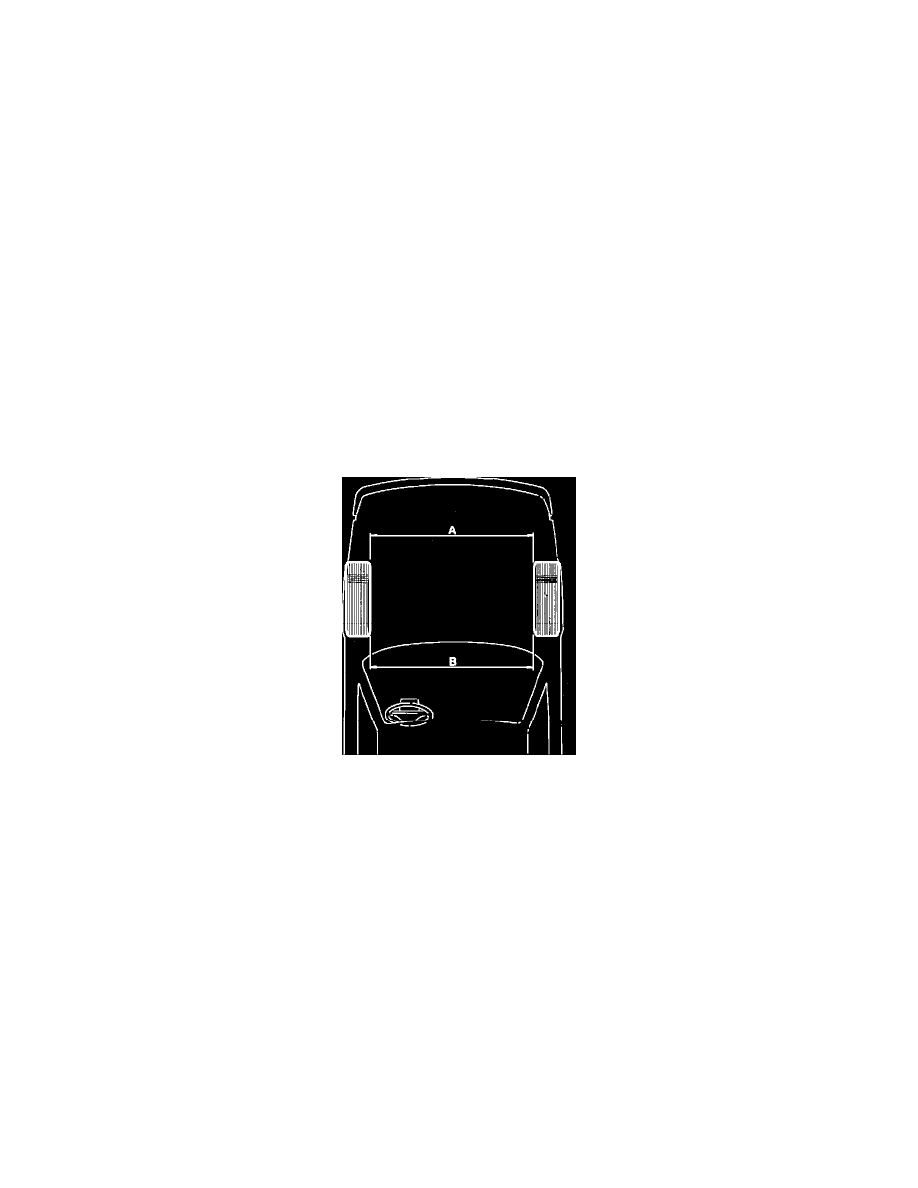9000 L4-1985cc 2.0L DOHC Turbo EFI (1987)

3. Slide the rubber gaiters towards the rack-and-pinion housing to expose the groove in which it seals.
4. Measure dimension C. Dimension is the distance between the locknut and the edge of the groove for the gaiter, must never be allowed to exceed
140 mm (5.51 inch).
5. Repeat steps 2 - 4 on the other side of the car.
6. Compare measurement the two values of dimension C. The difference between the two sides of the car must not exceed 2 mm (0.079 inch). The
main reasons that dimension C on either side of the car must not vary by more than 2 mm (0.079 inch) are:
^
To avoid. undesirable over-steer when cornering.
^
To avoid exceeding the maximum permissible working angle of the CV joints.
^
To prevent the wheel from rubbing against the wing liner.
7. Adjust, if necessary.
NOTE: The toe-in must be checked after any adjustment of the track rod length.
8. Slide the rubber gaiter back into the groove.
9. Refit the clip.
10. Repeat steps 8 - 9 on the other side of the car.
11. Check the position of the steering wheel.
Camber
Camber is preset during production and is not adjustable. If front camber is not within specified limits, check and replace defective components.
Caster
Caster cannot be adjusted. If setting is not within specified limits, defective components must be replaced.
Toe Setting
Fig. 2 Toe-in Adjustment Vehicle Position
DESCRIPTION
As viewed from above, the wheels must be set so that distances A and B, Fig. 1, measured at wheel rims and at axle height, are different at a given
value. If distance A is smaller than distance B, the setting is known as toe-in. If Distance A is greater than distance B, the setting is known as toe-out.
The toe setting is given in inches (mm) and refers to the difference between A and B. If distances A and B are the same, the toe setting is 0.
TOE-IN, ADJUST
Front
1.
Roll vehicle straight forward on level floor and stop without using brakes.
2.
Take a reading at dimension ``A,'' Fig. 1, using a suitable toe-in gauge between the front wheel rims level with axle. Mark measurement parts with
chalk.
3.
Roll vehicle forward until chalk marks are level with, but behind, axles and take reading of B, Fig. 1. Any necessary adjustment is made by
altering length of tie rod.
4.
Remove rubber bellows to track rod retaining clip.
5.
Push rubber bellows toward steering gear housing to expose groove in which bellows seals.
